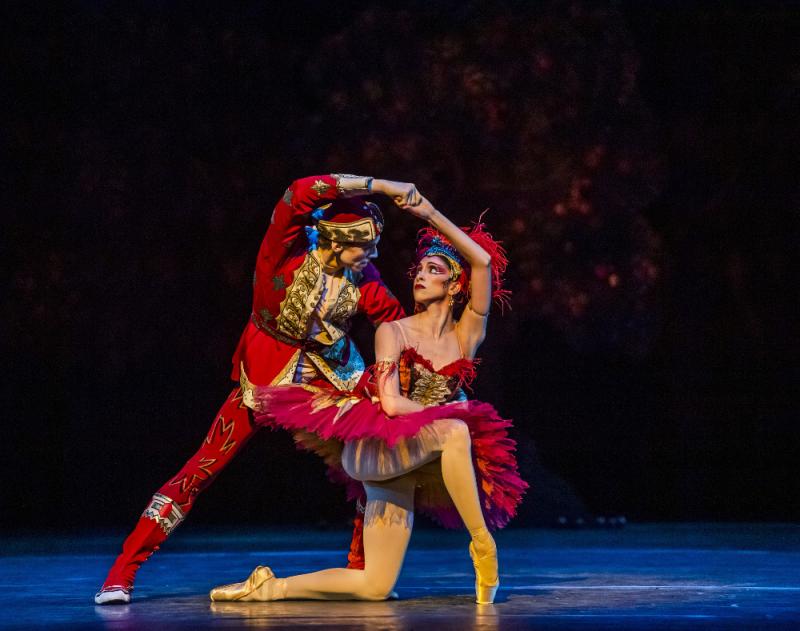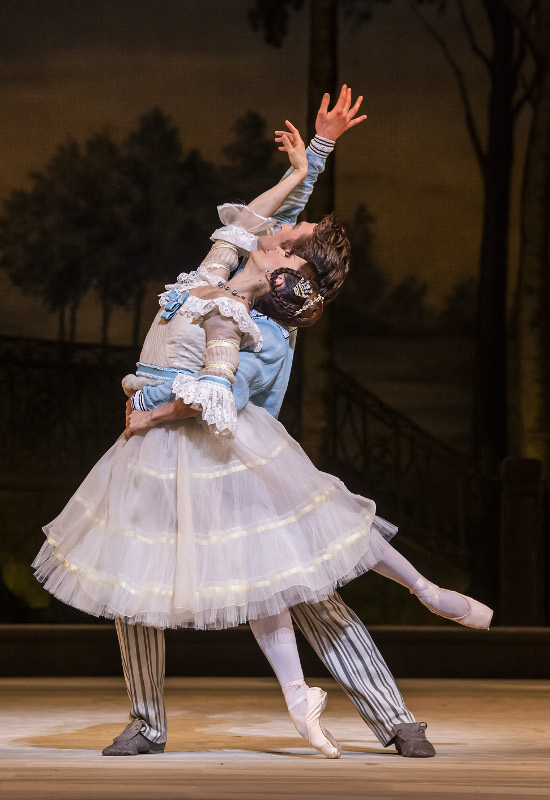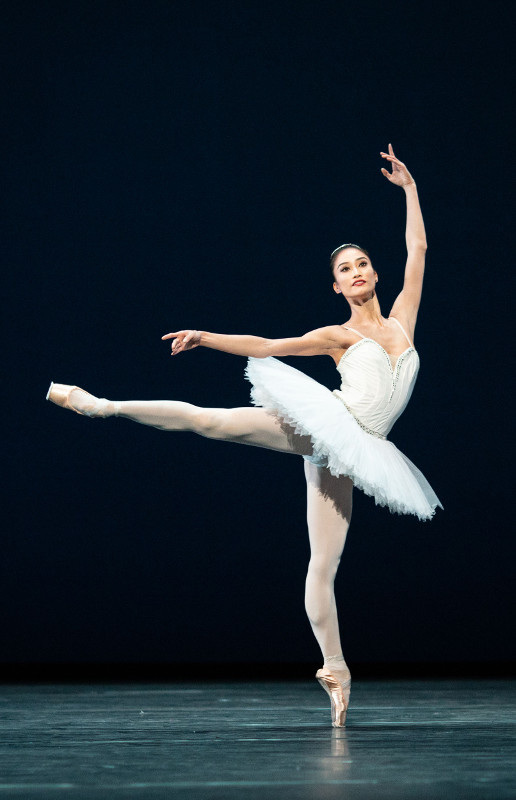The Firebird triple bill, Royal Ballet review - generous programme with Russian flavour | reviews, news & interviews
The Firebird triple bill, Royal Ballet review - generous programme with Russian flavour
The Firebird triple bill, Royal Ballet review - generous programme with Russian flavour
Trio of substantial pieces offers something for everyone

You can’t accuse the Royal Ballet of lightweight programming: the three juicy pieces in the triple bill that opened at the Royal Opera House on Tuesday add up to a three-hour running time. That’s a lot of ballet for your buck. Whether they actually go together is another question.
 A Month in the Country, Frederick Ashton’s throbbing little ode to forbidden passions running high in a Russian summer, is all about the central casting: get it right and you have a chamber tragedy; wrong and it's mere bourgeois histrionics. Tuesday's performance was let down by the lack of chemistry between Marianela Nuñez as a bored country lady and Matthew Ball as her son’s too-attractive tutor (pictured right). Nuñez inhabits Natalia's forced butterfly gaiety all right, but Ball slouches around accepting the amorous approaches of every female in the house like an entitled varsity sportsman rather than a poor-but-educated young hopeful caught precariously between love and position. Without that authentic central spark their affair never properly catches fire, except very briefly in the main pas de deux where the power of Ashton's passionate choreography seems to break down some barriers. Strong supporting work from the rest of the cast, including a scene-stealing turn from gorgeously musical Francesca Hayward as the disregarded ward Vera, is not enough to make this Month seem profound.
A Month in the Country, Frederick Ashton’s throbbing little ode to forbidden passions running high in a Russian summer, is all about the central casting: get it right and you have a chamber tragedy; wrong and it's mere bourgeois histrionics. Tuesday's performance was let down by the lack of chemistry between Marianela Nuñez as a bored country lady and Matthew Ball as her son’s too-attractive tutor (pictured right). Nuñez inhabits Natalia's forced butterfly gaiety all right, but Ball slouches around accepting the amorous approaches of every female in the house like an entitled varsity sportsman rather than a poor-but-educated young hopeful caught precariously between love and position. Without that authentic central spark their affair never properly catches fire, except very briefly in the main pas de deux where the power of Ashton's passionate choreography seems to break down some barriers. Strong supporting work from the rest of the cast, including a scene-stealing turn from gorgeously musical Francesca Hayward as the disregarded ward Vera, is not enough to make this Month seem profound.
Balanchine’s Symphony in C is the perfect marriage of music and movement: sparkling with neo-classical choreographic invention (and rhinestones) to match Bizet’s mood-lifter of a symphony. Last night’s cast took the opening movement just a shade too slowly — it should fairly crackle along — but Vadim Muntagirov’s big jumps and bigger smile were a joy, as always and Fumi Kaneko (pictured left) made a classical and composed debut as his partner, stepping in at the last minute to replace an injured Natalia Osipova. Sarah Lamb's coolly correct Andante pas de deux with Nicol Edmonds would have benefited from slightly less composure to bring out its White Swan resonances; Symphony in C may be an abstract ballet, but this movement has a story worth telling. Francesca Hayward's musicality shone again in the final allegro vivace, a whole-company celebration that cannot fail to raise a smile, even if — like the first movement — it could have been attacked with slightly more brio.
Perhaps surprisingly, The Firebird was the standout performance of the evening. Fokine and Stravinsky’s Ballets Russes classic can verge on the ridiculous, with its myriad ‘monsters’ in lavishly outré costumes, but in the Royal Ballet’s hands, it is cool, mysterious and never histrionic. Willowy Yasmine Naghdi was wild and dignified in the Firebird role, and Christina Arestis as the Beautiful Tsarevna and Edward Watson as Ivan Tsarevitch heroically managed to bring some feeling to their mainly symbolic roles. The 12 enchanted princesses were a cool white tonic to the eyes in Fokine's gorgeous character dance with its inventive tableaux (a sloping stack of princesses; why not?) and the house woodwind section brought thrilling life to the witchy woodland soundscape of Stravinsky’s score.
Natalia Goncharova's designs deserve much of the credit for making The Firebird so magical: they certainly whet the appetite for her big retrospective at Tate Modern, which opens today. In the first section, a subtly shimmering darkness perfectly foregrounds the fiery colours of the bird and the Tsarevitch; in Khostcheï's court we marvel at a gobsmacking panoply of colours and shapes that shouldn't work together (rose and russet!) but do; while the final scene celebrates the coronation of the Tsarevitch and Tsarevna with harmonious extravagance — several dozen additional spear-carriers are needed just for this short scene — in front of a truly splendid backcloth of a city of churches.
These three very different pieces may make slightly odd bedfellows, but that’s only a small quibble to set against a programme abounding in quality as well as quantity of dancing.
rating
Explore topics
Share this article
Add comment
The future of Arts Journalism
You can stop theartsdesk.com closing!
We urgently need financing to survive. Our fundraising drive has thus far raised £49,000 but we need to reach £100,000 or we will be forced to close. Please contribute here: https://gofund.me/c3f6033d
And if you can forward this information to anyone who might assist, we’d be grateful.

Subscribe to theartsdesk.com
Thank you for continuing to read our work on theartsdesk.com. For unlimited access to every article in its entirety, including our archive of more than 15,000 pieces, we're asking for £5 per month or £40 per year. We feel it's a very good deal, and hope you do too.
To take a subscription now simply click here.
And if you're looking for that extra gift for a friend or family member, why not treat them to a theartsdesk.com gift subscription?
more Dance
 'We are bowled over!' Thank you for your messages of love and support
Much-appreciated words of commendation from readers and the cultural community
'We are bowled over!' Thank you for your messages of love and support
Much-appreciated words of commendation from readers and the cultural community
 R:Evolution, English National Ballet, Sadler's Wells review - a vibrant survey of ballet in four acts
ENB set the bar high with this mixed bill, but they meet its challenges thrillingly
R:Evolution, English National Ballet, Sadler's Wells review - a vibrant survey of ballet in four acts
ENB set the bar high with this mixed bill, but they meet its challenges thrillingly
 Like Water for Chocolate, Royal Ballet review - splendid dancing and sets, but there's too much plot
Christopher Wheeldon's version looks great but is too muddling to connect with fully
Like Water for Chocolate, Royal Ballet review - splendid dancing and sets, but there's too much plot
Christopher Wheeldon's version looks great but is too muddling to connect with fully
 iD-Reloaded, Cirque Éloize, Marlowe Theatre, Canterbury review - attitude, energy and invention
A riotous blend of urban dance music, hip hop and contemporary circus
iD-Reloaded, Cirque Éloize, Marlowe Theatre, Canterbury review - attitude, energy and invention
A riotous blend of urban dance music, hip hop and contemporary circus
 How to be a Dancer in 72,000 Easy Lessons, Teaċ Daṁsa review - a riveting account of a life in dance
Michael Keegan-Dolan's unique hybrid of physical theatre and comic monologue
How to be a Dancer in 72,000 Easy Lessons, Teaċ Daṁsa review - a riveting account of a life in dance
Michael Keegan-Dolan's unique hybrid of physical theatre and comic monologue
 A Single Man, Linbury Theatre review - an anatomy of melancholy, with breaks in the clouds
Ed Watson and Jonathan Goddard are extraordinary in Jonathan Watkins' dance theatre adaptation of Isherwood's novel
A Single Man, Linbury Theatre review - an anatomy of melancholy, with breaks in the clouds
Ed Watson and Jonathan Goddard are extraordinary in Jonathan Watkins' dance theatre adaptation of Isherwood's novel
 Peaky Blinders: The Redemption of Thomas Shelby, Rambert, Sadler's Wells review - exciting dancing, if you can see it
Six TV series reduced to 100 minutes' dance time doesn't quite compute
Peaky Blinders: The Redemption of Thomas Shelby, Rambert, Sadler's Wells review - exciting dancing, if you can see it
Six TV series reduced to 100 minutes' dance time doesn't quite compute
 Giselle, National Ballet of Japan review - return of a classic, refreshed and impeccably danced
First visit by Miyako Yoshida's company leaves you wanting more
Giselle, National Ballet of Japan review - return of a classic, refreshed and impeccably danced
First visit by Miyako Yoshida's company leaves you wanting more
 Quadrophenia, Sadler's Wells review - missed opportunity to give new stage life to a Who classic
The brilliant cast need a tighter score and a stronger narrative
Quadrophenia, Sadler's Wells review - missed opportunity to give new stage life to a Who classic
The brilliant cast need a tighter score and a stronger narrative
 The Midnight Bell, Sadler's Wells review - a first reprise for one of Matthew Bourne's most compelling shows to date
The after-hours lives of the sad and lonely are drawn with compassion, originality and skill
The Midnight Bell, Sadler's Wells review - a first reprise for one of Matthew Bourne's most compelling shows to date
The after-hours lives of the sad and lonely are drawn with compassion, originality and skill
 Ballet to Broadway: Wheeldon Works, Royal Ballet review - the impressive range and reach of Christopher Wheeldon's craft
The title says it: as dancemaker, as creative magnet, the man clearly works his socks off
Ballet to Broadway: Wheeldon Works, Royal Ballet review - the impressive range and reach of Christopher Wheeldon's craft
The title says it: as dancemaker, as creative magnet, the man clearly works his socks off
 The Forsythe Programme, English National Ballet review - brains, beauty and bravura
Once again the veteran choreographer and maverick William Forsythe raises ENB's game
The Forsythe Programme, English National Ballet review - brains, beauty and bravura
Once again the veteran choreographer and maverick William Forsythe raises ENB's game

Comments
I cannot comprehend the